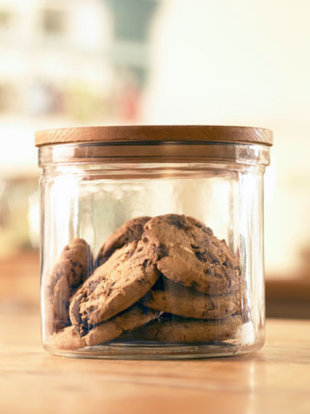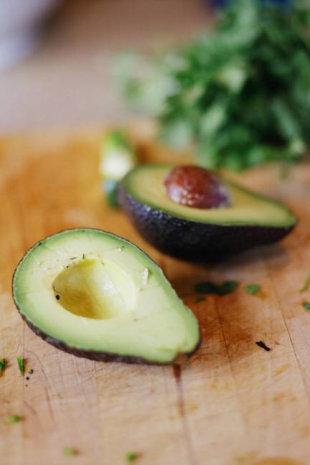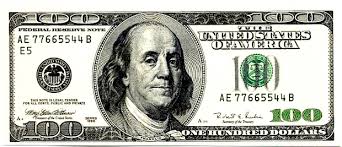 By Good Housekeeping | Healthy Living
By Good Housekeeping | Healthy Living
It's what you eat, not where you keep it that contributes to weight gain, right? Yes and no. The way you've organized your kitchen can make all the difference with your stay-slim plan. Samantha Cassetty, MS, RD, Good Housekeeping Research Institute's nutrition director, shares how your current setup may not support your healthy-eating goals.
1. The Cookie Jar Is on the Countertop
Leaving a container loaded with treats in plain sight provides unrestricted access to what should remain an occasional indulgence. Clear containers tempt a sweet tooth even more.
Instead: Replace the jar of sugary goodies with a bowl of whole fruits such as apples, oranges, or bananas to encourage healthier snacking. Keep junk food out of sight and in a hard-to-reach location to dissuade unhealthy munching, says Cassetty.
2. You Pack Snacks in Sandwich-Size Baggies
Large plastic baggies are helpful when packing a sandwich for lunch, but they aren't doing your waistline any favors when it comes to snacks. "Filling a sandwich bag with nuts might mean noshing on a whopping 1,000 calories!" Cassetty warns.
Instead: Stock your pantry with snack-size bags for portioning an appropriate amount of on-the-go goodies. For nuts, an 125-calorie diet-friendly portion equals 18 almonds, 20 peanuts, or 30 pistachios.
3. Your Plates & Glasses Are Too Large
Larger platter sizes contribute to over-serving and overeating, according to a 2012 study in theJournal of Consumer Research. Steer clear of oversized wine glasses as well, says Cassetty. In a Good Housekeeping Research Institute study, testers poured themselves the perfect amount -- 5 ounces -- when equipped with a smaller stem. But when pouring into a larger glass, almost half of the group gave themselves 2 ounces more on average -- that's the equivalent of 50 extra calories!
Instead: Use a 9- or 10-inch salad dish to plate your food, and stick with a 10- or 12-inch wine goblet -- a little larger than a champagne flute and way smaller than the fish-bowl size glass you find at many restaurants.
4. Your Plates Aren't Colorful Enough
Top chefs aren't the only ones who should care about how their meals looks plated. According to a 2012 study in the Journal of Consumer Research, diners who used plates that were a similar color as their meal ended up serving themselves more food than participants with more colorful dishes.
Instead: Invest in red dinnerware, which can reduce calorie intake by 40%, according to researchers. Red plates and cups can also lead you to have less snacks and soft drinks, according to a 2012 study in the journal Appetite. "If you aren't in the market for new dishes, try setting the table with a red tablecloth or placemats instead," suggests Cassetty.
5. You're Hiding Your Produce
You can easily forget about fruit and veggies by stashing them at the back of your fridge or in opaque crisper drawers. Keeping them there too long leads to spoiled food and wasted money.
Instead: Prepare salads ahead of time and store them at the front of your fridge, so fresh veggies remain a priority, says Cassetty. If you have room in your grocery budget for the extra expense, save the time and effort required for chopping and cleaning fresh produce and buy them precut and prewashed. "I'm a busy working mom so these cheats allow my son and me to eat healthfully and spend extra time together," she says.
6. Your Kitchen Is Disorganized
If food prep isn't easy or you can't find certain pans or ingredients, you may be tempted to call for takeout -- and that's going to impede your healthy-eating plan, says Cassetty.
Instead: Make sure your cookware and go-to ingredients are readily available and easy to find. "A food processor can make quick work out of chopping onions and julienning veggies, but if you relegate it to the back of the cupboard, you may wind up underusing it," says Cassetty. "I also give valuable counter space to my indoor grill -- perfect for making chicken, fish, and even veggies with very little added oil."
7. You're Not Planning Meals in Advance
When you have a mile-long to-do list, finding time to plan the first steps of dinner prep can be tough. Realizing you forgot to defrost the chicken for tonight's dish can derail a meal and your diet -- especially if you order in Chinese or hit the supermarket's buffet counter.
Instead: Set reminders in your smartphone, so you don't forget to remove meat from the freezer or to pick up lemons on your way home from work. "Isn't it called a smartphone for a reason? I'm pretty sure it's because it can outsmart busy people," jokes Cassetty. "I can't tell you how many times this has saved me." If you're not into high-tech to-do lists, there are always old-fashioned sticky notes -- leave them on your refrigerator door, cabinets you open frequently or other kitchen spots you might hit on a busy morning.
- By JuJu Kim







